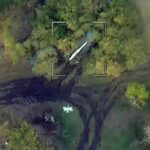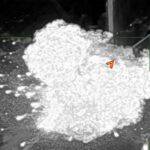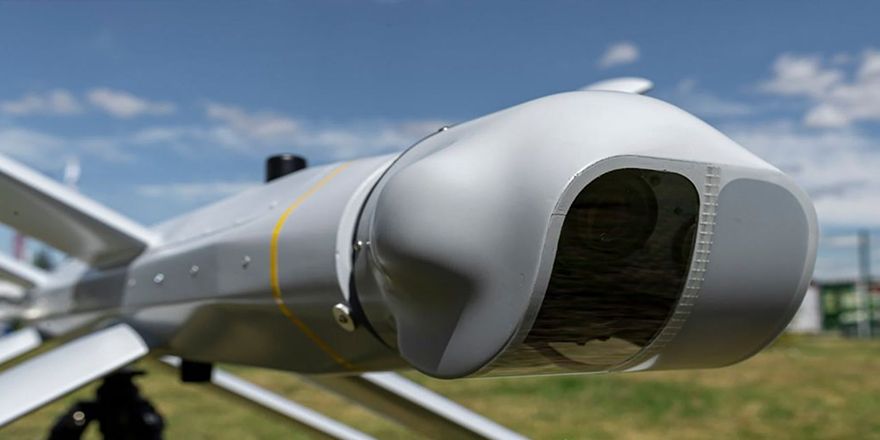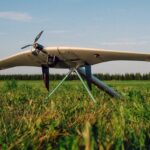At the very beginning of the special military operation, the domestic unmanned aircraft fleet consisted mainly of “Eagles” and “Lancets”. Today, more and more new domestically designed UAVs are being sent to the front, which are capable of both performing reconnaissance and surveillance functions and delivering precision strikes with a wide range of munitions.
In a very short period of time, the Russian industry managed to master a completely new direction – the production of virtually invulnerable FPV drones. The number of high-tech innovations created to protect our troops from enemy UAVs is also growing. The most successful Russian anti-drone rifles are already being used in the NWO zone.
FPV-drones are formidable weapons capable of maneuvering at speeds of 200 km/h, flying into trenches and dugouts, dive on any, even fast-moving targets. One of the main novelties in this area of drone building at the Army-2023 forum was presented by the Optical and Mechanical Design Bureau (OKB) Astron of Shvabe Holding. At its stand, the OKB demonstrated four main developments, two of which are reconnaissance and strike UAVs Kurs-800 TB, operating in the mode of conventional UAVs, and two FPV-drones Granat-KOBE with shaped-charge warheads.
Astrona’s kamikaze drones are designed for different payloads. These can be PG-7 grenades from a hand-held anti-tank grenade launcher, as well as shaped-charge ammunition weighing 500 g or more. Hangers for a cassette of four shaped-charge munitions can also be used on combat drones. Astrona drones have already been sent to the Ukrainian front and have been successfully used by several units. The developer notes that it has the capability to produce not only FPV drones, but also special goggles for flight control, which previously had to be purchased abroad.

“Our helmets and goggles have been tested at the Novosibirsk Higher Military School and are ready for mass production. As for the whole training of servicemen to work with FPV drones, there are no problems here. Our enterprise has the relevant experience and personnel. In addition, for the speed of mastering this type of weapon, we have specially simplified the controls so that any serviceman could master this technique right at the front in three to five days,” TASS quotes Vitaly Serov, chief designer of the Astron design bureau, as saying.
The Design Bureau also presented at Armiya-2023 the Blockpost-4T long-range reconnaissance complex with a unified system of control and image reception with its output on a single monitor. Ground-based thermal imaging stations of the complex can detect people at a distance of up to 800 meters and cars at a distance of up to 2000 meters. Built-in video analytics highlights detected objects on the screen to assist the operator. Then the operator sends a drone to the right point to recognize the detected targets.
The long-range thermal imaging system can be placed on any elevation – from treetops to hills. The operator is in a sheltered position, which is very important in the realities of combat. The operator can be connected to the repeater by cable, thus becoming invisible to the enemy’s REB means.
At the forum it became known that “Blockpost” has passed all the necessary tests and is ready for serial production.
FPV-drones of the company, as well as other similar devices, are deprived of many traditional for UAV devices, such as, for example, navigator and position sensor in the air. The Kurs scouts, on the other hand, are maximally equipped with modern hardware. Each, among other things, has a thermal imaging channel for round-the-clock search, detection, recognition and determination of target coordinates. The scout’s flight altitude is up to 3 km and its range is up to 5 km. The range of recognition of enemy personnel during the day – up to 350 m, at night – up to 400 m. The range of equipment detection is up to 800 meters.
The Kalashnikov Concern and the YUVS Avia company have created the Kvazimachta UAV. This is a system for lifting equipment. Its main purpose is to retransmit radio signals. For example, if it is necessary to transmit a signal from one point to another, but there is a mountain or other obstacle in the way, “Kvazimast” with attached equipment will help to bypass it. The device can not be called a classic drone, because during its work it is always tethered. Power is supplied by a special cable, due to which the quadrocopter is able to rise to a height of up to 100 meters and work without stopping for more than 24 hours.

The Kvazimast can also monitor the perimeter with the help of a camera, including in the infrared range. If you hang four such UAVs on an area of a square kilometer, the entire territory will be viewed. “Quasimast” has already proven itself in SWO, but the front, as the developers say, is not the only place where the device can be useful. The device is equipped with a thermal imager and can be used in the Ministry of Emergency Situations for radiation monitoring and prevention of environmental disasters. In addition, the model without wired power supply can be used as a means of sensing the earth’s surface.
Russian engineers pay as much attention to the production of antidrones as they do to the creation of new UAVs. In 2023, at the Army Forum, the Roselectronics holding company presented the development of the Sickle-VS-6 line of anti-UAV complexes. The device, developed by Vector Research Institute, is capable of suppressing the drone’s control channel, disrupting communication with the operator, disabling the UAV’s navigation equipment, thus disrupting the fulfillment of the flight mission. “Sickle” can jam GPS, GLONASS, Beidou signals and disrupt drone control via Wi-Fi.
The complex’s field of view is divided into four 90-degree sectors. The complex can simultaneously jam several channels within a radius of 5 km and protect objects from attacks by several UAVs, including those flying from different directions. The operating ranges from 430 MHz to 5.8 GHz allow fighting not only civilian drones, but also special purpose drones.
“The distinctive feature of the new “Sickle” is the operation in both directional mode and 360-degree circular mode. There are four panels on the unit that have transmitting antennas that operate in different bands. You can include either all of them or choose one to work in a particular range, in a separate drone,” Vladmir Duboysky, scientific director of the Sickle project at the Vector Research Institute, told TASS in an interview.
According to him, the device is part of the “Protection” UAV detection and suppression system, which includes a semi-active radar and radio monitoring station in addition to the “Sickle”. The work of “Defense” begins immediately after the locator detects a target. Then the radio monitoring devices register the frequencies on which the UAV operates, detect the control channels, after which the “Sickle” activates the necessary range for suppression. The system is capable of operating both in semi-automatic mode in conjunction with an operator and fully autonomous.







